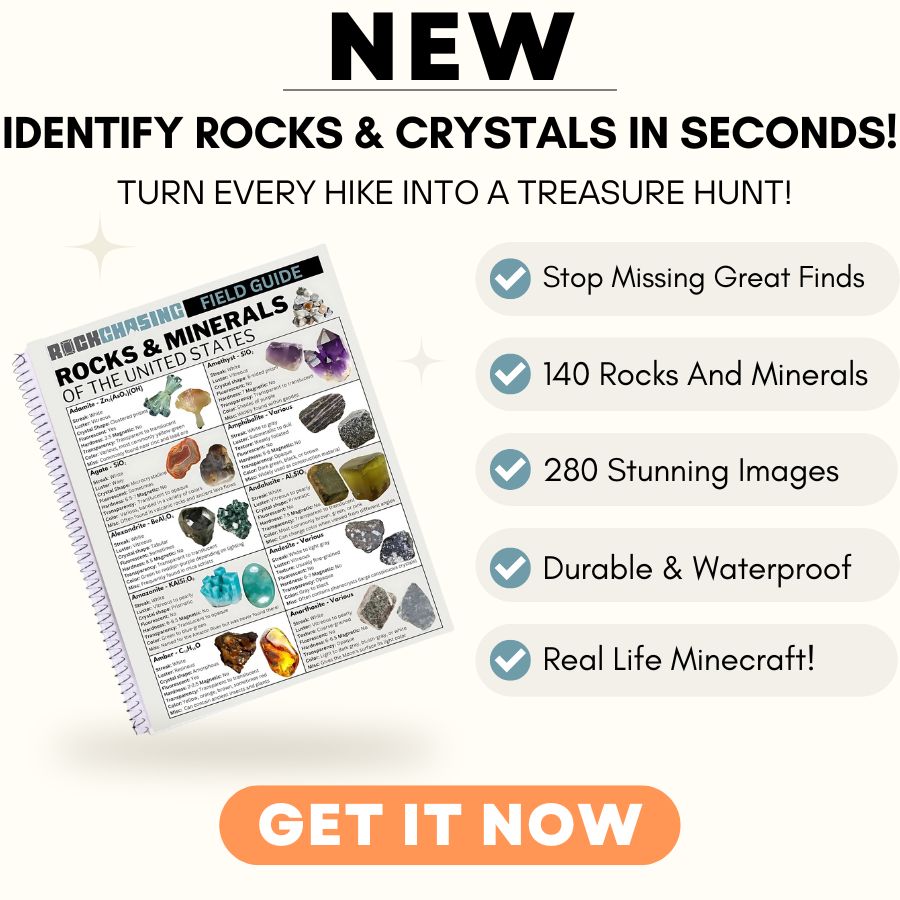Finding labradorite in Tennessee can be a real pain. You drive for hours, check spots people told you about, and come home empty-handed. It’s frustrating when you waste a whole day and have nothing to show for it.
But Tennessee does have labradorite hiding in its hills and streams. You just need to know where to look. The right spots can reward you with beautiful pieces for your collection or jewelry projects.
In this guide, I’ll share actual Tennessee locations where other rock hunters have found labradorite. I’ll tell you which areas have the best chances and when to go.
How Labradorite Forms Here
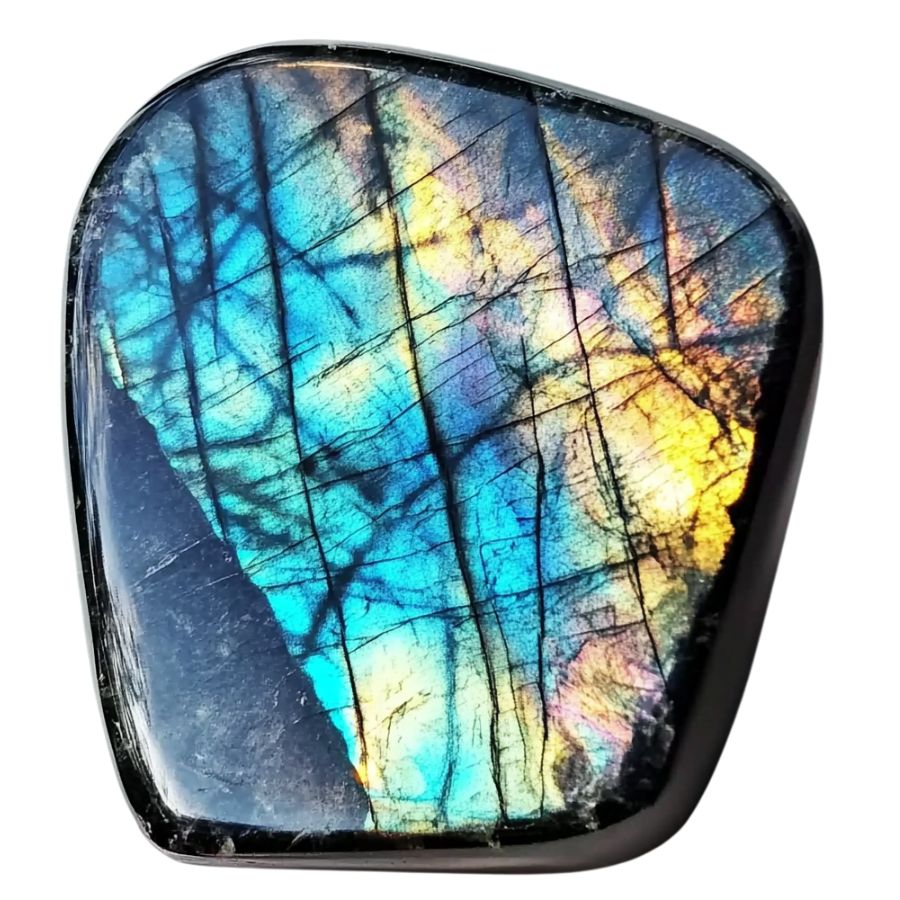
Labradorite forms deep underground when magma slowly cools and crystallizes. The process happens when different minerals separate while cooling, creating thin layers stacked on top of each other. These layers have slightly different chemical makeups, usually about 1 micron thick.
When light hits these layers, it creates that stunning blue-green flash we love, called labradorescence. The stone starts out as a mix of calcium, sodium, aluminum, and silicate minerals.
As it cools, these minerals organize themselves into this layered pattern, which happens most often in places where magma intrudes into the surrounding rock. It’s like nature’s own light show, frozen in stone.
Types of Labradorite
Labradorite comes in several distinct varieties. Each type exhibits special qualities that make it sought after by collectors.
Blue Labradorite
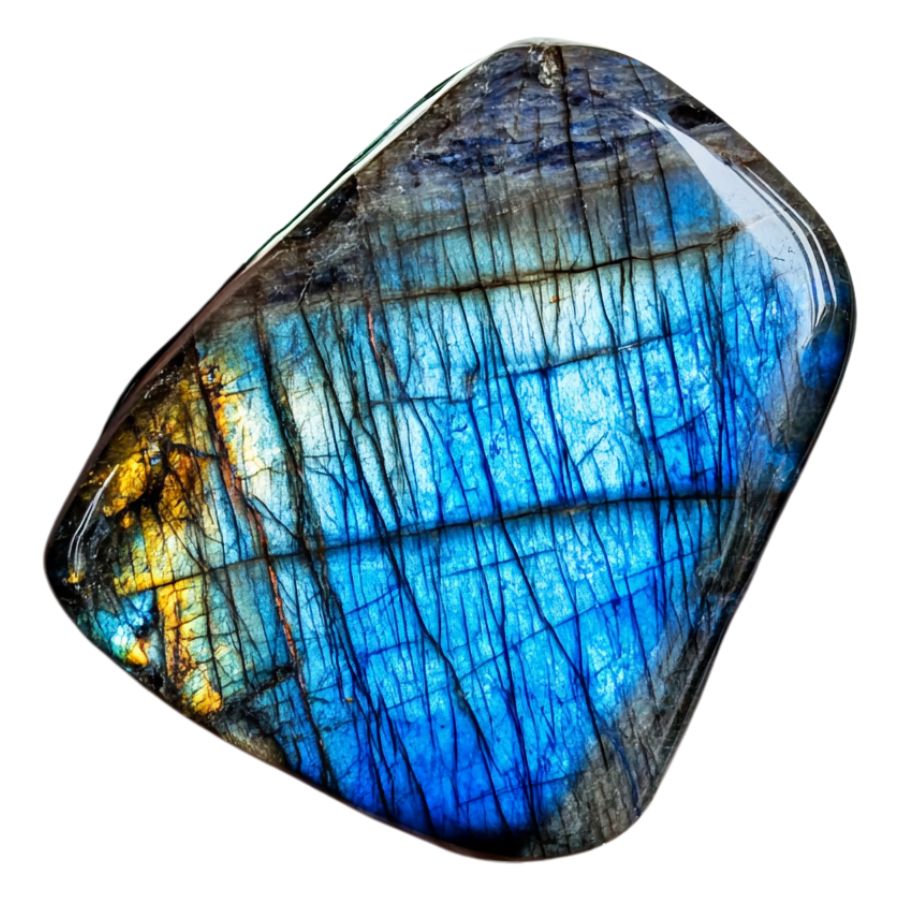
Blue Labradorite stands out for its remarkable blue iridescence against a dark gray or black background. When light hits the stone’s surface, it creates a stunning display of electric blue flashes, sometimes accompanied by hints of green or violet.
The blue flashes appear most vivid when viewing the stone from specific angles, creating an almost magical transformation as you rotate it. This effect is often compared to the ethereal beauty of the Northern Lights.
Exceptional specimens display an intense, electric blue flash that covers a large portion of the stone’s surface. Some pieces also show secondary colors like aqua or sea green, adding depth to their visual appeal. The contrast between the dark base and bright blue flashes makes each piece unique.
Golden Labradorite
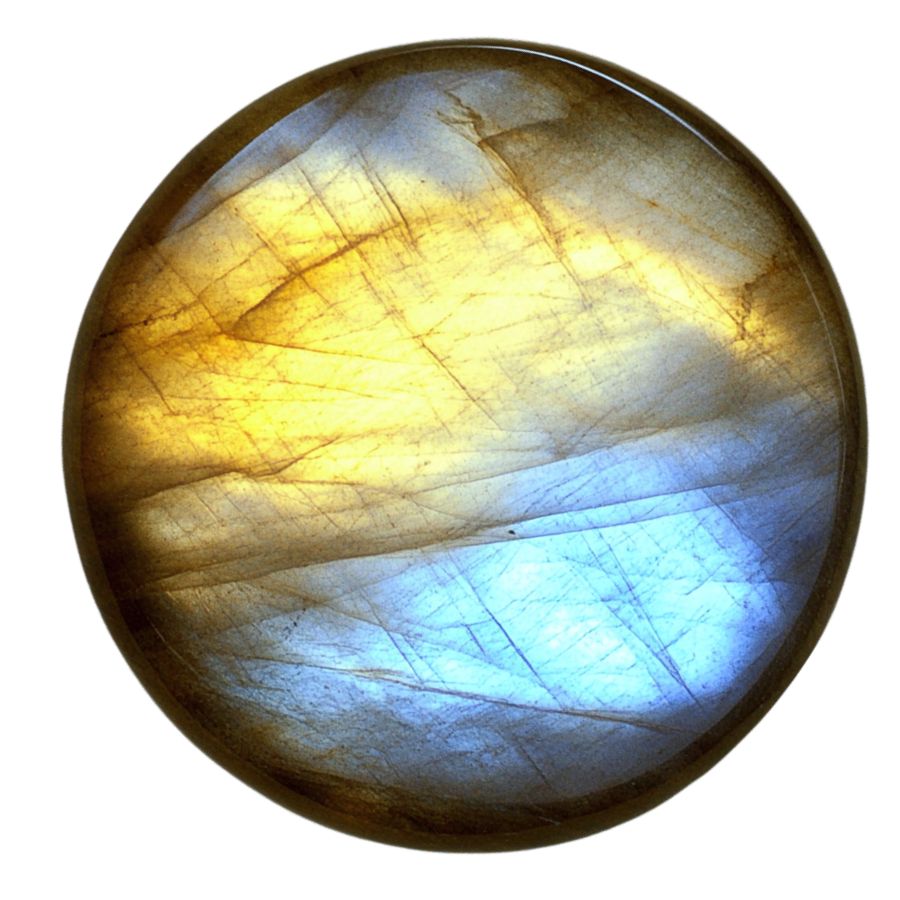
Golden Labradorite displays a mesmerizing golden-yellow sheen that sets it apart from other varieties. The stone’s surface exhibits brilliant flashes of gold and amber, creating a warm, sun-like glow that seems to emanate from within. These golden rays often appear alongside subtle hints of green or champagne colors.
What makes Golden Labradorite special is its ability to display multiple golden hues simultaneously. Some specimens show a range of colors from pale yellow to deep amber, creating a multi-dimensional effect.
The golden flash can vary in intensity and coverage, with premium specimens showing broad, bright areas of gold schiller.
Rainbow Moonstone
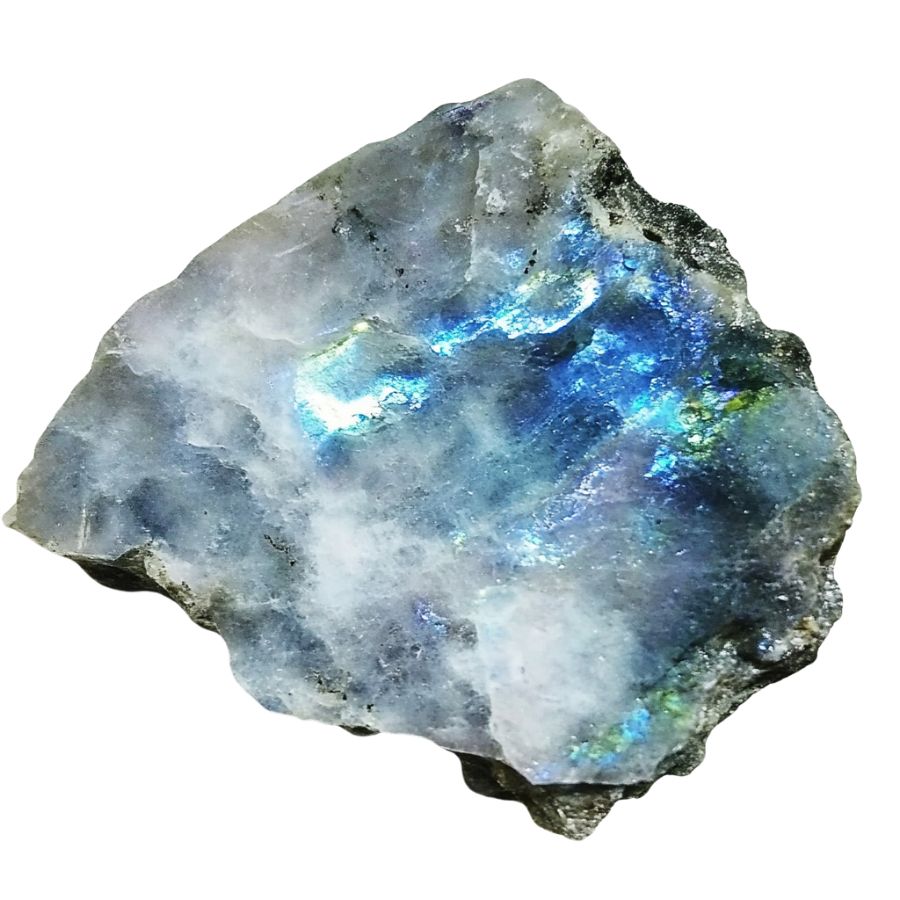
Rainbow Moonstone Labradorite exhibits a distinctive white or colorless base with an enchanting blue sheen that floats across its surface. Blue sheen is often accompanied by flashes of other colors, including pink, yellow, and green.
This stone’s most captivating feature is how its colors appear to float just beneath the surface, creating an almost three-dimensional effect. As light moves across the stone, these colors shift and change, revealing new patterns and combinations. This creates a dynamic display that seems to change with every movement.
The stone’s transparency can range from translucent to semi-transparent, with the most valued pieces showing excellent clarity beneath their shimmering surface.
Spectrolite
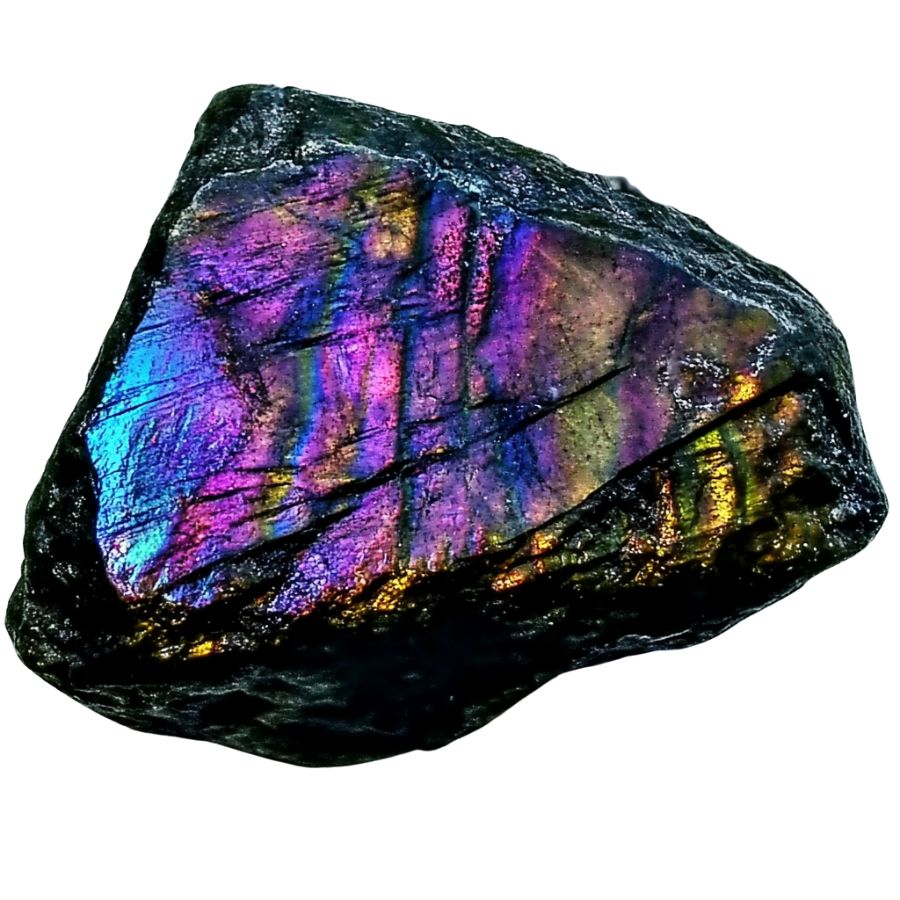
Spectrolite reigns as the most dramatic member of this stone family, with its distinctive jet-black base setting it apart from other varieties.
What makes it truly special is that premium specimens can simultaneously display the complete spectrum of colors, from deep indigo to bright orange, emerald green to royal purple, all in a single piece.
The finest specimens possess what experts call “full-face color,” meaning the vibrant display covers most of the stone’s surface rather than appearing in small patches.
This characteristic, combined with its remarkable color intensity, has earned Spectrolite its reputation as the most visually impressive variety of all similar stones.
Transparent Labradorite
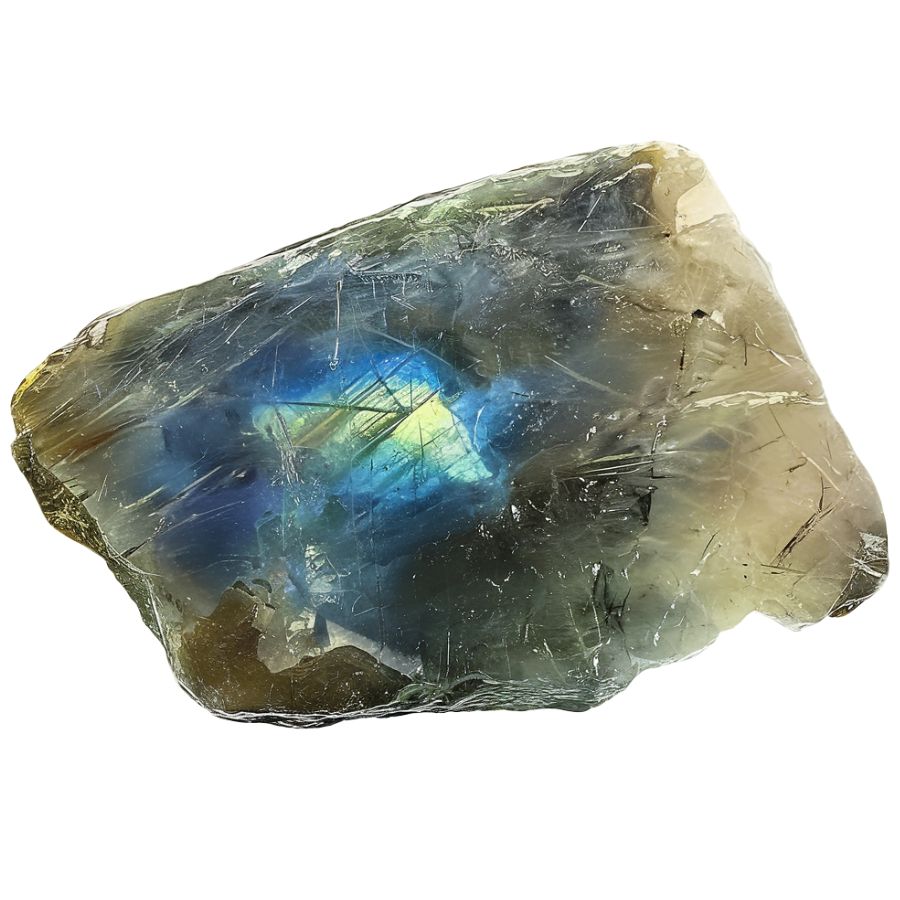
Transparent Labradorite exhibits a remarkable clarity that separates it from its opaque cousins. Crystal-clear areas allow light to pass through, creating an exceptional display of blue flashes against the transparent background.
Natural specimens often show areas of both transparency and translucency. Beautiful color changes occur as you move this stone, with the transparent areas revealing subtle blue sheens that seem to float within the crystal.
Some pieces display additional colors like soft greens or pale yellows, though the blue flash remains dominant.
Remarkable clarity combines with the signature color play to create stones that appear almost liquid-like.
Andesine-Labradorite
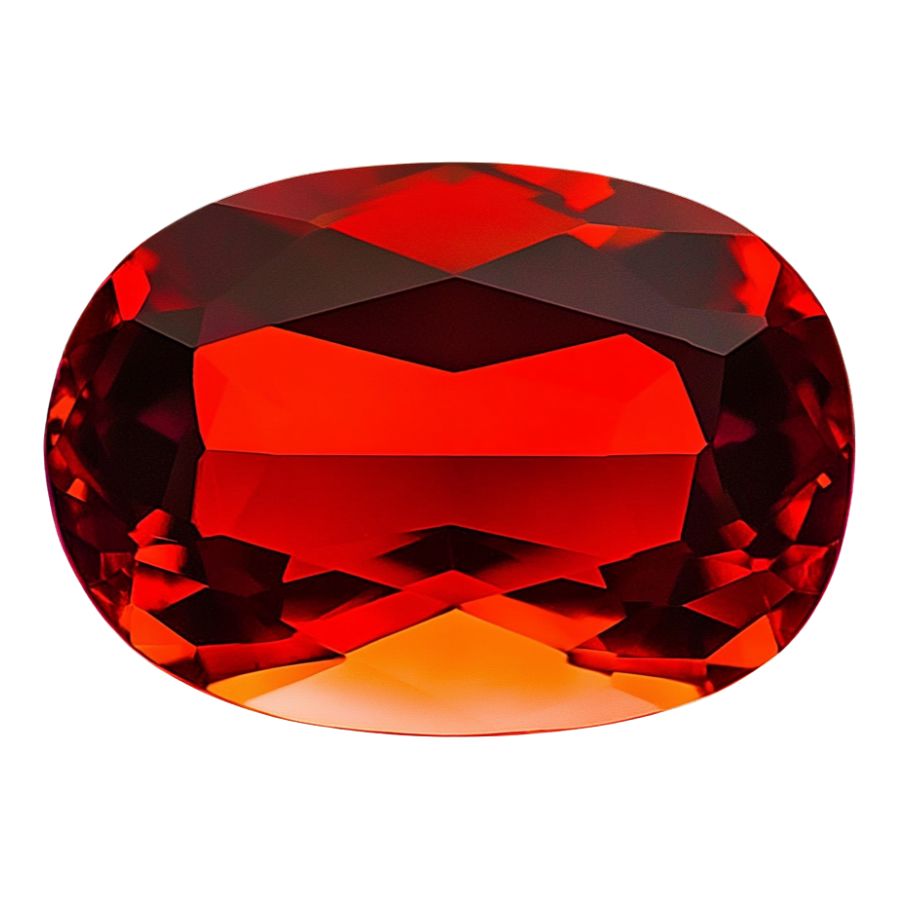
Reddish-orange hues dominate Andesine-Labradorite’s appearance, creating a warm and inviting glow. Delicate green and yellow streaks often appear throughout the stone, adding complexity to its color palette.
Metallic sparkles dance across the surface, different from the typical labradorescent effect. Fresh discoveries of this relatively new gemstone continue to reveal new color combinations.
Striking color variations appear in high-quality pieces, ranging from deep red to bright orange. Many specimens show subtle color zoning, where different hues blend together in distinct patterns.
Black Labradorite
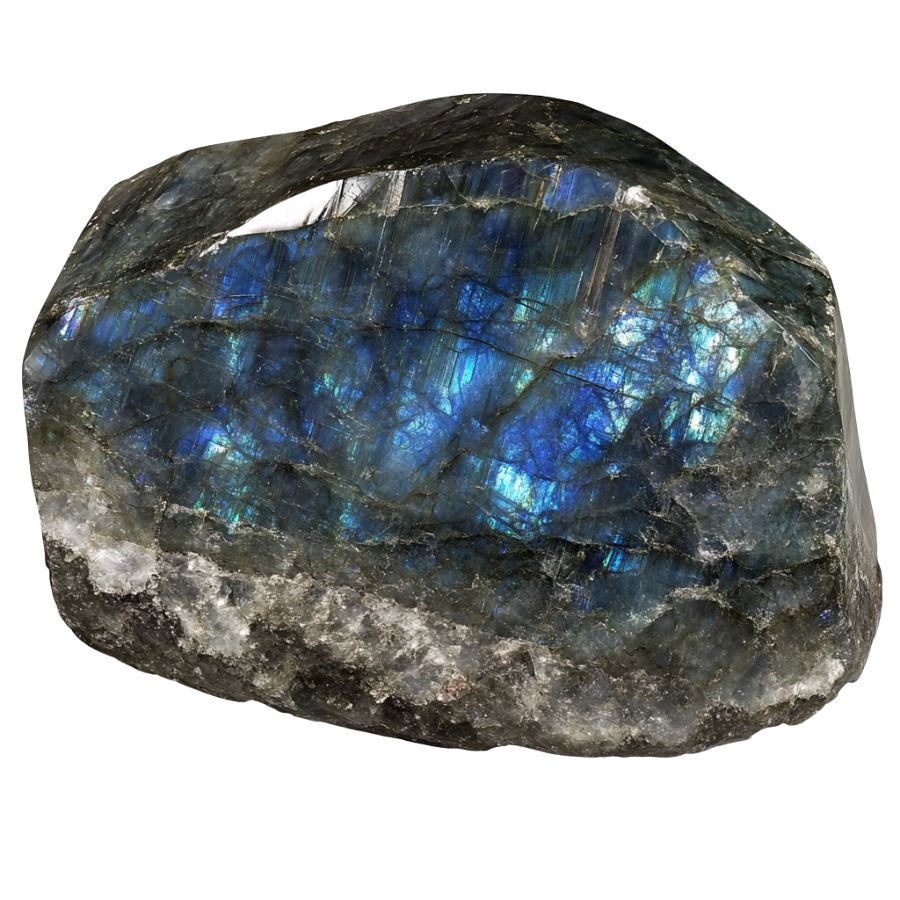
Black Labradorite presents a dramatic dark canvas that emphasizes its colorful display. Bright flashes of color stand out dramatically against the deep black background, creating stunning visual contrast.
Most specimens show multiple colors at once, creating an eye-catching display. These color displays often include electric blues, emerald greens, and golden yellows, all visible simultaneously.
Natural sunlight brings out the boldest displays, while artificial light can highlight subtle color variations. Some specimens also show interesting patterns in how the colors are distributed.
Brown Labradorite
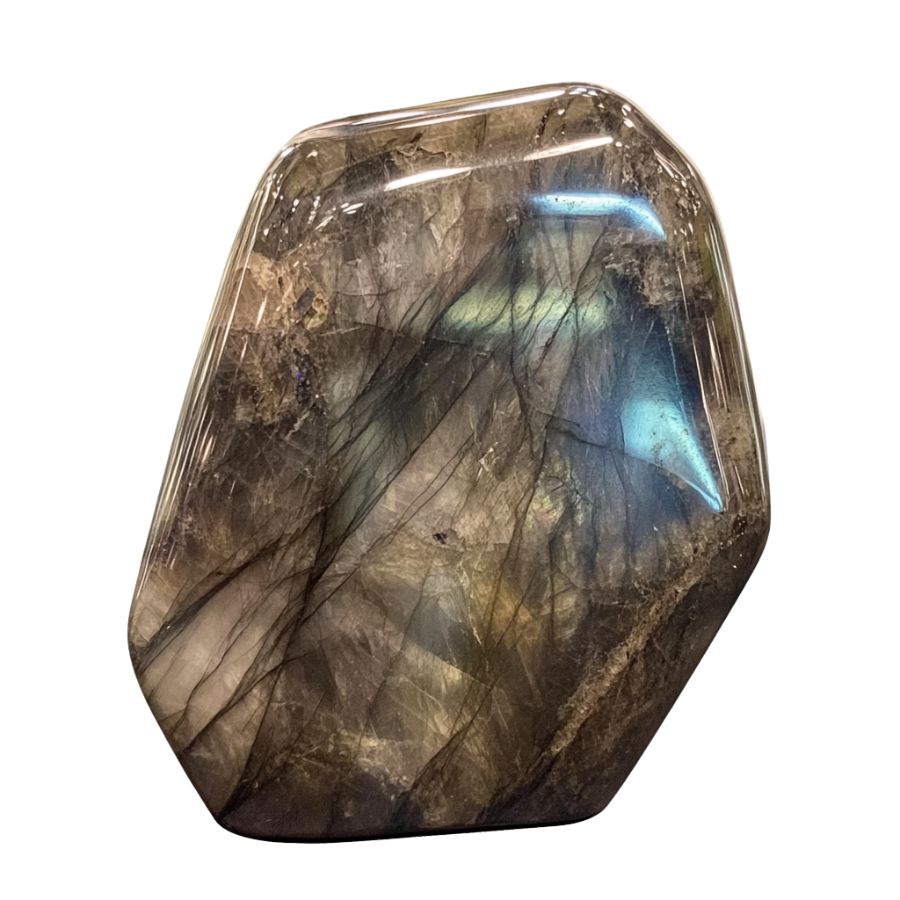
Brown Labradorite features rich earth tones ranging from deep chocolate to warm amber. Peach and orange undertones often appear throughout the stone, creating depth and dimension.
Multiple color zones create interesting patterns within each stone. These patterns can include stripes, swirls, or mottled areas that combine different brown and orange hues.
Subtle iridescence sometimes appears on the surface, adding an unexpected shimmer to the earthy colors. This effect is more subdued than in other varieties but adds an interesting dimension to the stone’s appearance.
What Rough Labradorite Look like?
Labradorite in its rough form can be tricky to spot, but once you know what to look for, it becomes easier. Here’s how to recognize this fascinating stone in its natural state.
Look for the Signature Flash
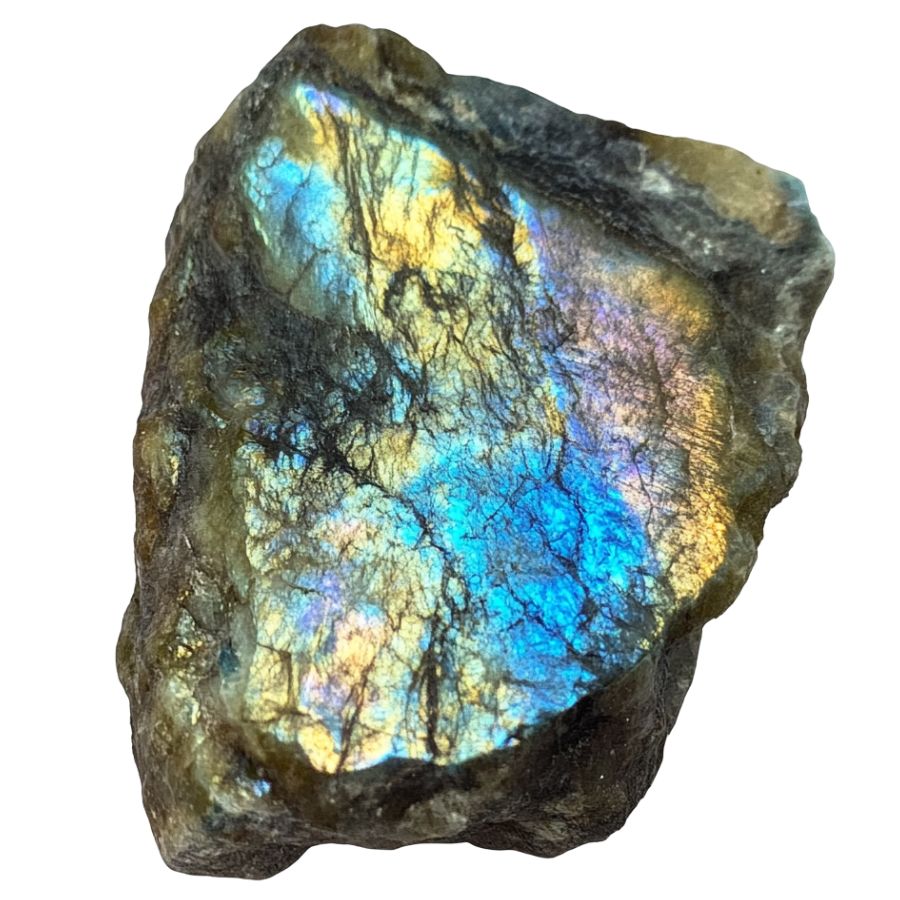
Raw labradorite often shows patches of its famous iridescent flash, even when unpolished. Check dark gray or black areas under direct sunlight – you might catch glimpses of blue, green, or gold shimmer.
Sometimes, you’ll need to wet the surface slightly to see this effect better. The flash isn’t always obvious but usually appears as scattered patches.
Check the Base Color and Texture
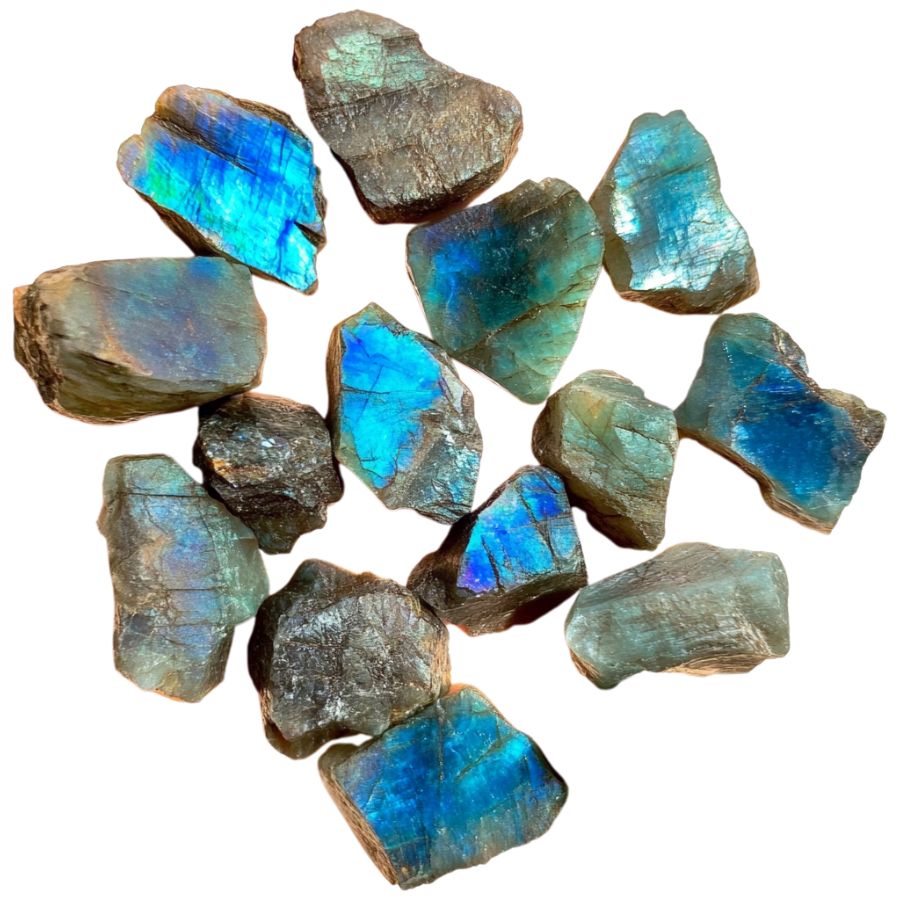
The main body should be dark gray to black, sometimes with a slight greenish tinge. The surface feels smooth but not glossy, similar to unpolished glass.
Look for a slightly bumpy texture with occasional flat surfaces. Fresh breaks will show a more uniform color than weathered surfaces.
Assess the Hardness and Breakage
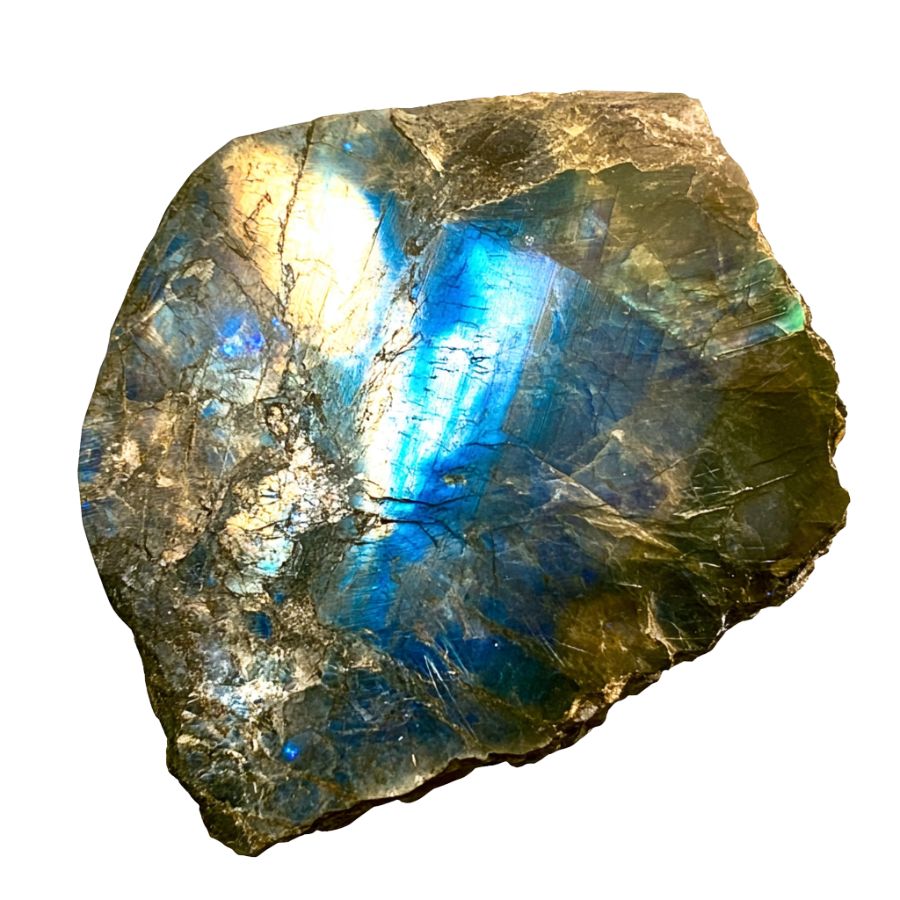
Try scratching the surface with a copper penny – it shouldn’t leave a mark. The stone often breaks with smooth, flat surfaces at distinct angles.
You’ll notice these angular breaks are pretty characteristic, unlike random rough breaks in common rocks.
Test the Translucency
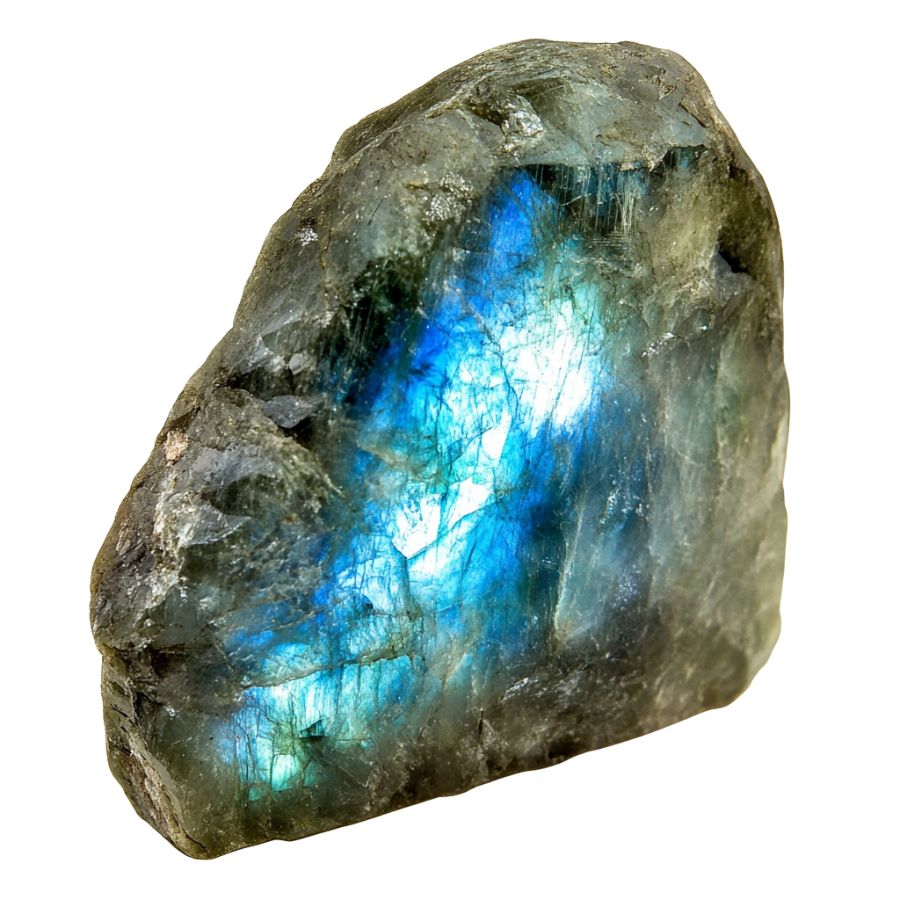
Hold a thin edge up to strong light. Raw labradorite should show some translucency, appearing slightly cloudy rather than completely opaque. The edges might look slightly whitish or gray when light passes through. Thicker pieces will appear darker and more opaque.
A Quick Request About Collecting
Always Confirm Access and Collection Rules!
Before heading out to any of the locations on our list you need to confirm access requirements and collection rules for both public and private locations directly with the location. We haven’t personally verified every location and the access requirements and collection rules often change without notice.
Many of the locations we mention will not allow collecting but are still great places for those who love to find beautiful rocks and minerals in the wild without keeping them. We also can’t guarantee you will find anything in these locations since they are constantly changing.
Always get updated information directly from the source ahead of time to ensure responsible rockhounding. If you want even more current options it’s always a good idea to contact local rock and mineral clubs and groups
Tips on Where to Look
Labradorite isn’t super common in everyday places, but with some smart searching, you can find it. Here’s where you should look:
Metamorphic Rock Formations
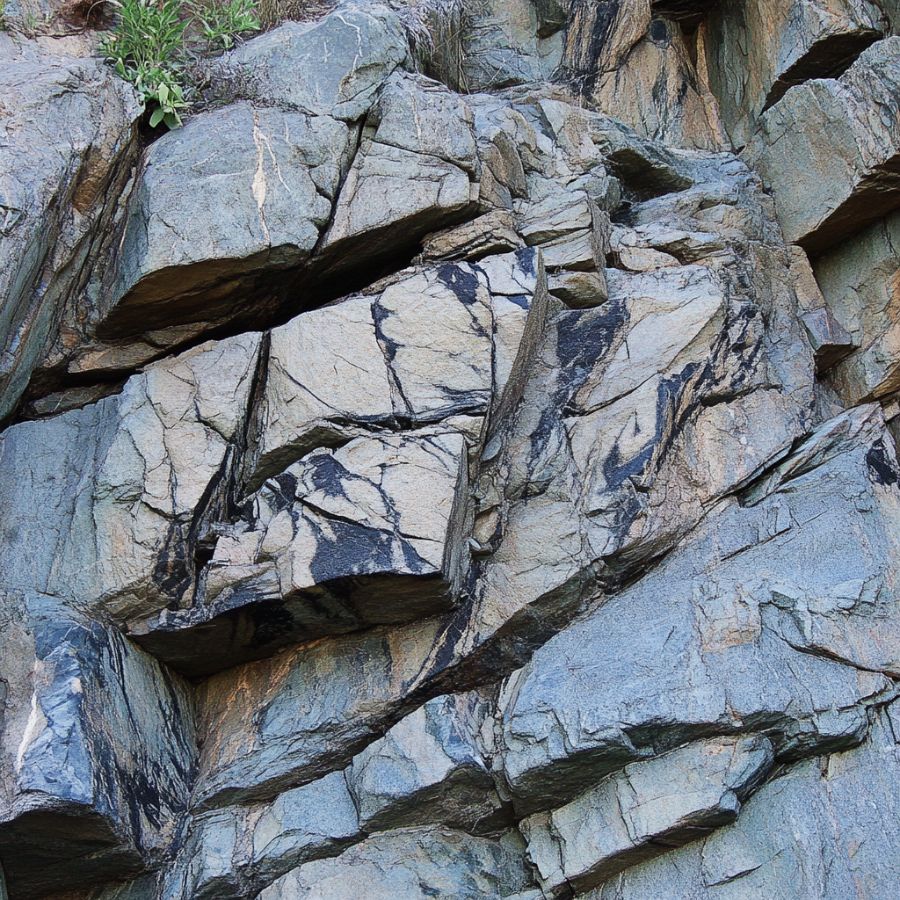
Look for dark-colored rock outcrops. Spot areas with lots of feldspar minerals. Check exposed cliff faces. Sometimes, when the sun hits just right, you might catch that signature blue flash from larger formations that’s a dead giveaway for labradorite presence.
Glacial Deposits
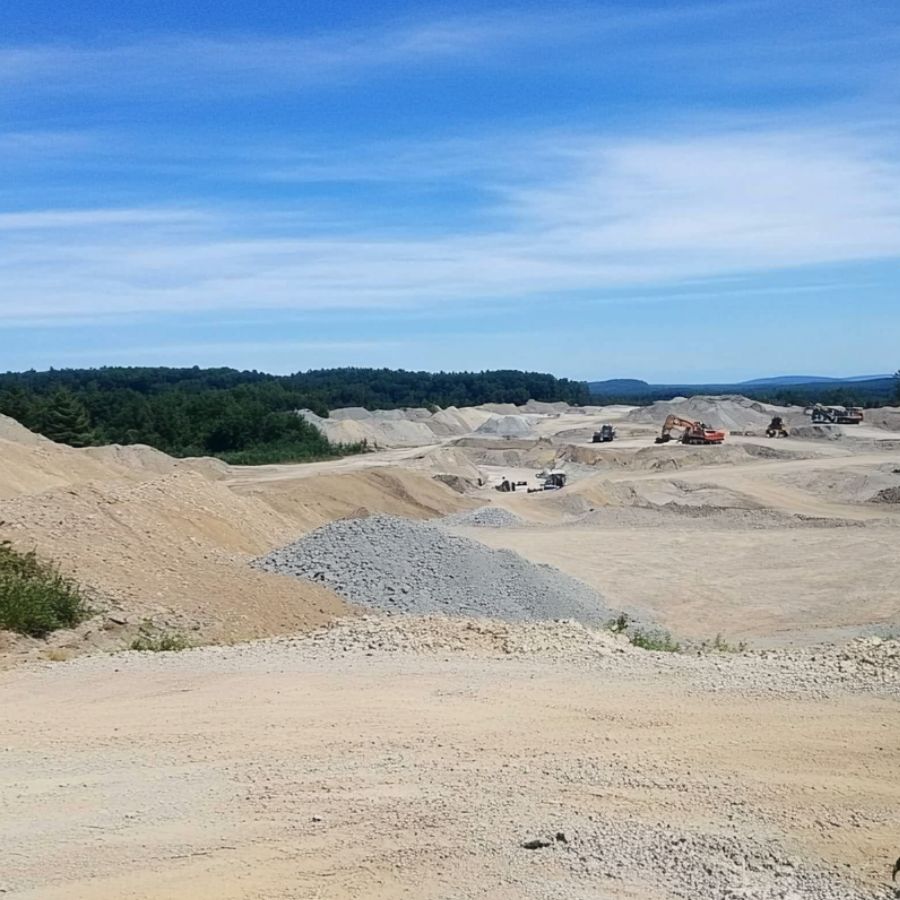
Search river beds after glacial deposits. Check gravel pits near old glacial paths. Look for smooth, dark gray stones mixed with other rocks. These deposits often contain chunks of labradorite that have broken off from larger formations and been carried downstream over thousands of years.
Mining Tailings
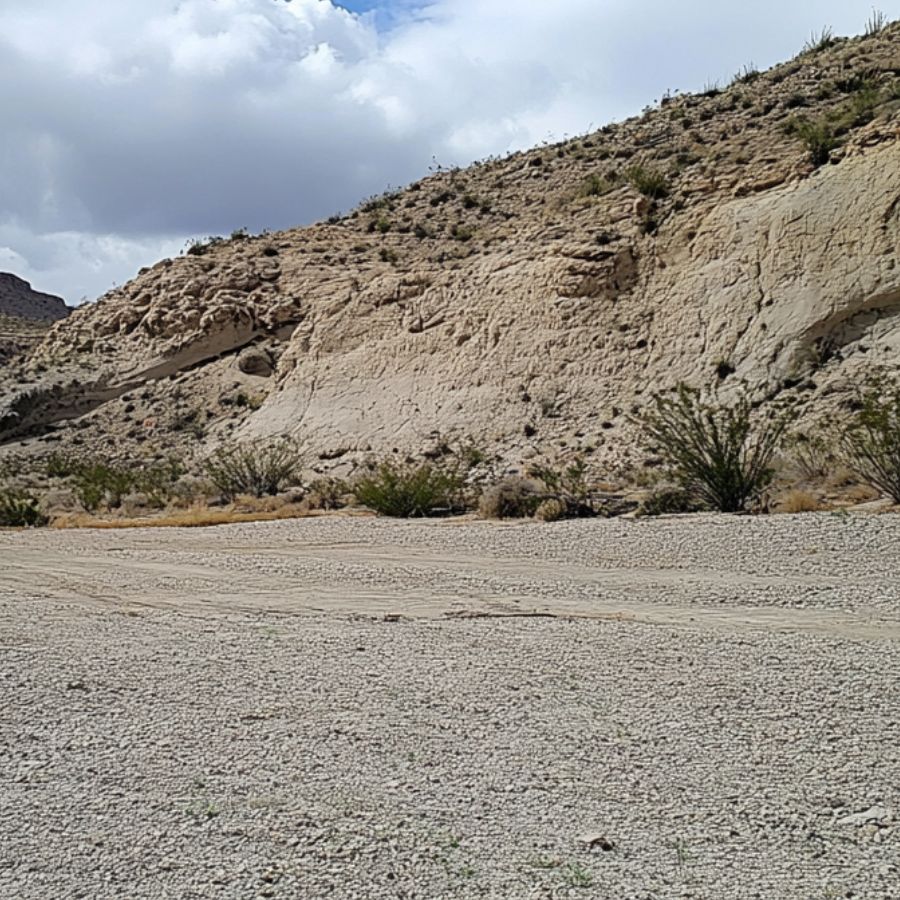
Visit abandoned feldspar mines. Check mine dump areas. Dig through tailings piles. Look for flat, shiny surfaces. The waste rock from old mining operations often contains overlooked pieces of labradorite that weren’t considered valuable during active mining periods but are perfect for collectors.
Stream Beds
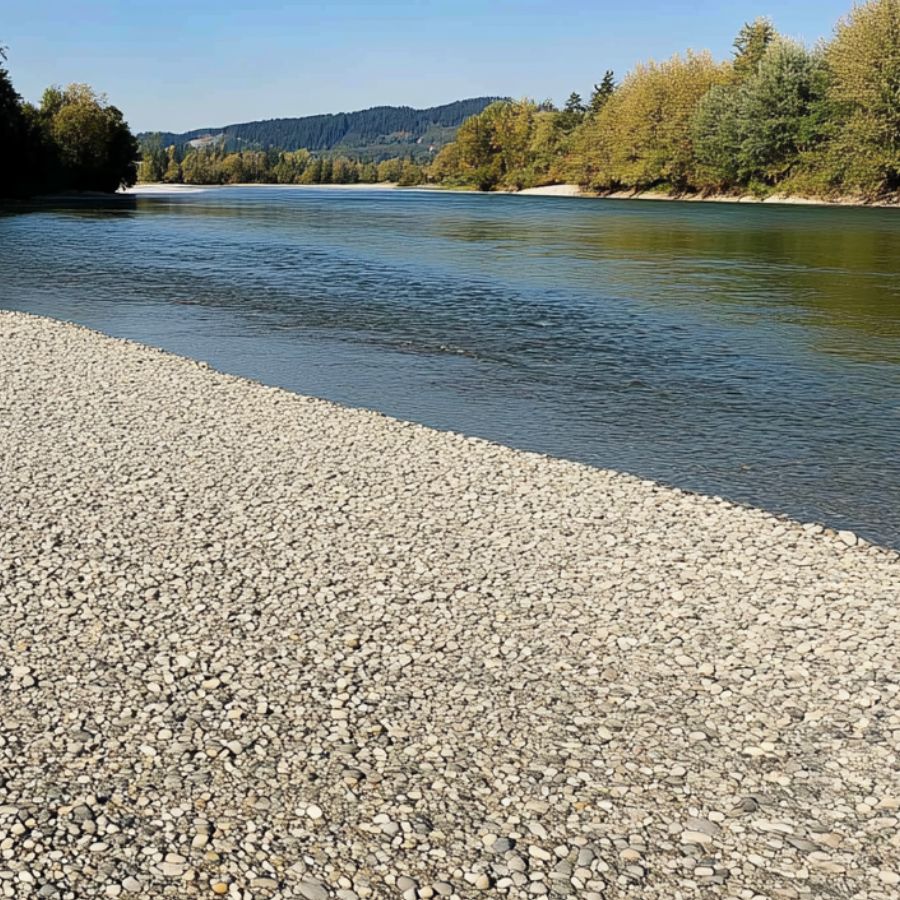
Search clear-water streams. Look under water-worn rocks. Check gravel bars after rain. Spot dark, plate-like stones. The constant water movement often exposes and polishes these stones, making them easier to identify when wet.
Some Great Places To Start
Here are some of the better places in the state to start looking for Labradorite:
Always Confirm Access and Collection Rules!
Before heading out to any of the locations on our list you need to confirm access requirements and collection rules for both public and private locations directly with the location. We haven’t personally verified every location and the access requirements and collection rules often change without notice.
Many of the locations we mention will not allow collecting but are still great places for those who love to find beautiful rocks and minerals in the wild without keeping them. We also can’t guarantee you will find anything in these locations since they are constantly changing.
Always get updated information directly from the source ahead of time to ensure responsible rockhounding. If you want even more current options it’s always a good idea to contact local rock and mineral clubs and groups
Great Smoky Mountains
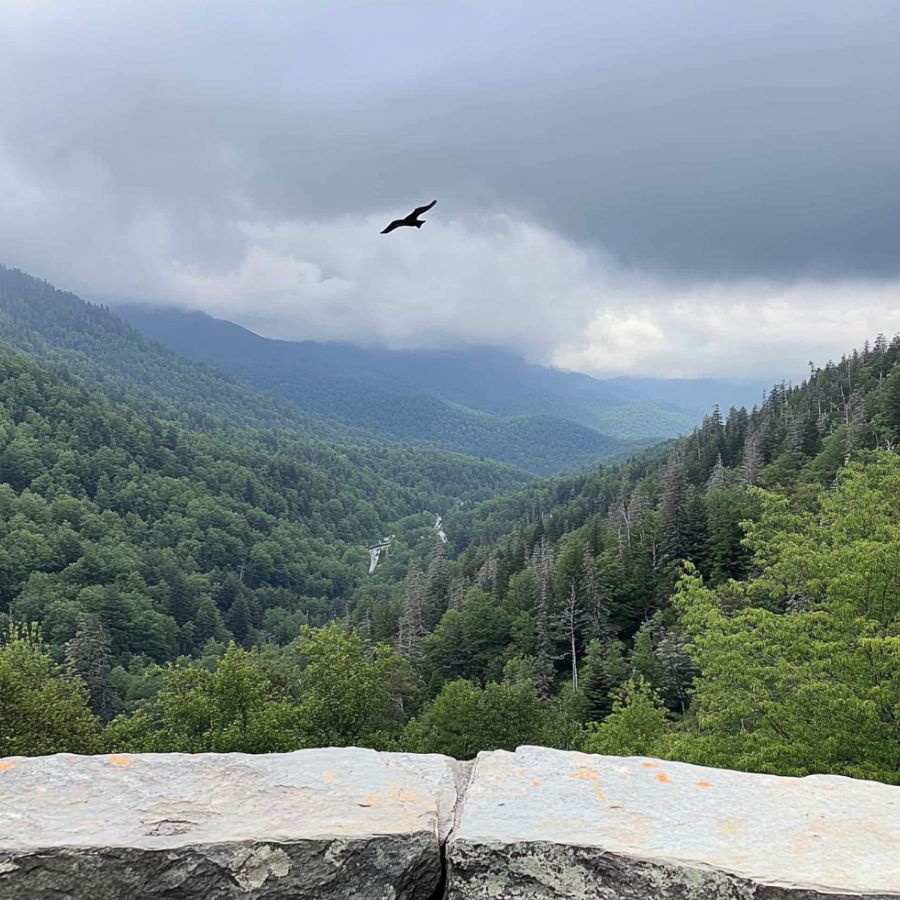
The Great Smoky Mountains stretch along the Tennessee-North Carolina border in the southeastern United States. This mountain range is part of the Appalachian Mountains and includes impressive peaks like Clingmans Dome, which rises over 6,000 feet.
Labradorite specimens can be found among the metamorphic rocks that make up much of the mountain range. Rockhounds often search near streams and creeks where water has exposed fresh rock surfaces.
Areas near Chimney Tops and Alum Cave Trail offer good chances for finding labradorite. The Ocoee Supergroup rock formations, created through intense heat and pressure, are especially promising spots.
Spring and fall provide the best hunting conditions when vegetation is minimal and recent rains have washed away dirt from rock surfaces. Many visitors combine gemstone hunting with enjoying the park’s famous wildflowers and stunning mountain views.
Mountain City
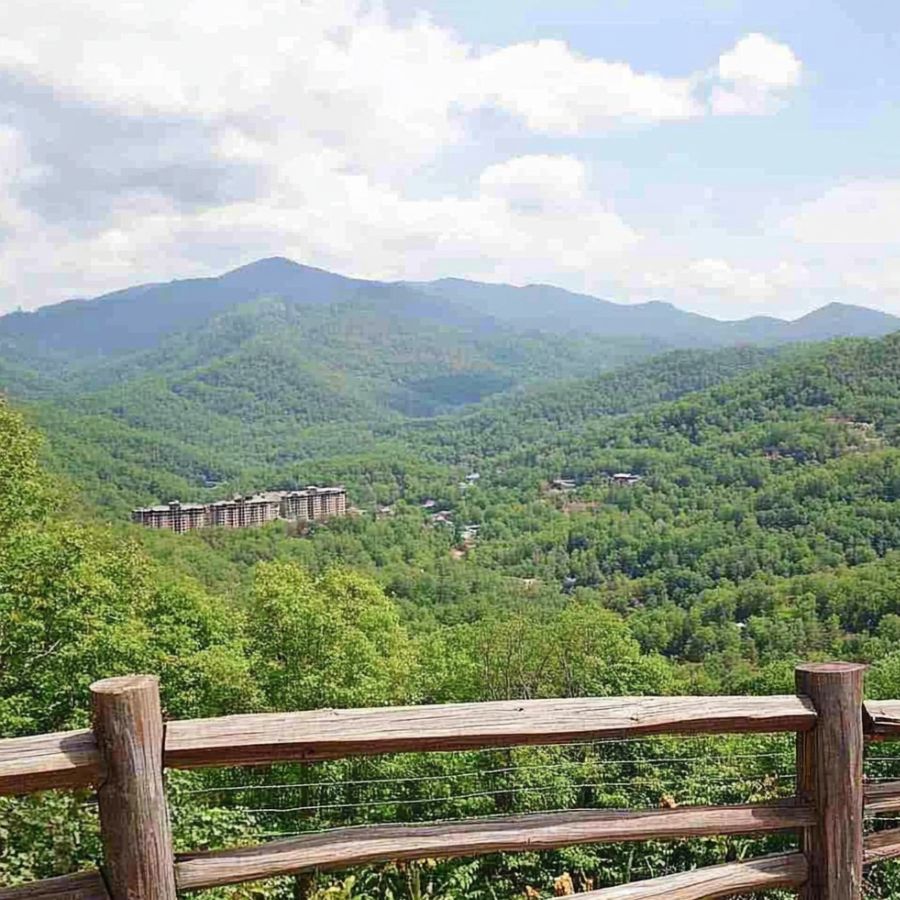
Mountain City is located at the very northeast tip of Tennessee, standing at 2,418 feet, making it the highest city in the state. This small town is surrounded by mountains, with Doe Mountain to the southwest, Forge Mountain to the east, and the Iron Mountains to the north. U.S.
The Mountain City Mining District has a long history of mineral discoveries. Rockhounds visit the area to search for various stones in the mineral-rich soil.
Roadcuts along Tennessee Highway 167 offer good spots to search for labradorite specimens.
Johnson County’s rock formations contain several minerals besides labradorite, making this highland valley a worthwhile stop for stone collectors exploring the Appalachian region.
Roan Mountain
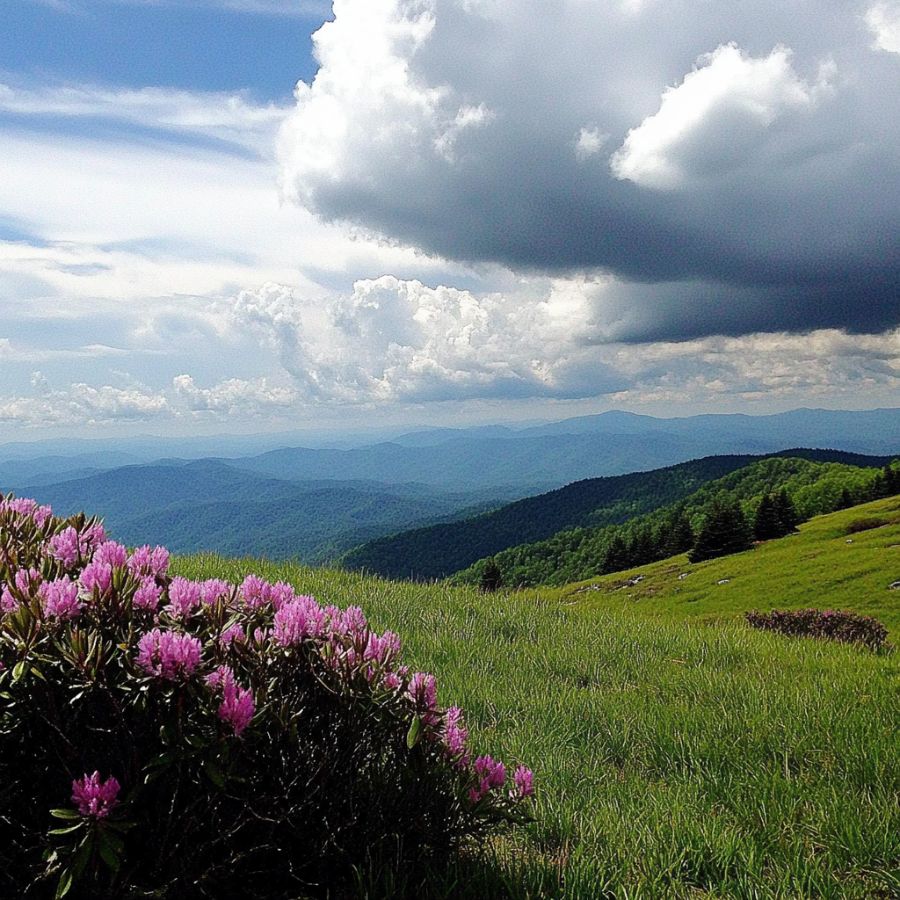
Roan Mountain stands tall in northeastern Tennessee, close to the North Carolina border in Carter County. Part of the Roan Highlands, its peak reaches 6,285 feet, making it one of Tennessee’s highest mountains. The area boasts beautiful grassy balds and thick forests that draw hikers and nature lovers.
You’ll probably find Roan Mountain exciting because of its old rock formations. These rocks date back to Precambrian and Cambrian times, with special types like Cranberry Gneiss and Beech Granite. Such rocks create good conditions for minerals to form.
Check exposed rock areas and stream beds across the mountain. The best spots are often along hiking trails where rocks are visible at the surface.
Mountain streams also offer good hunting grounds as water helps wash away dirt and expose hidden gems.
Tennessee River
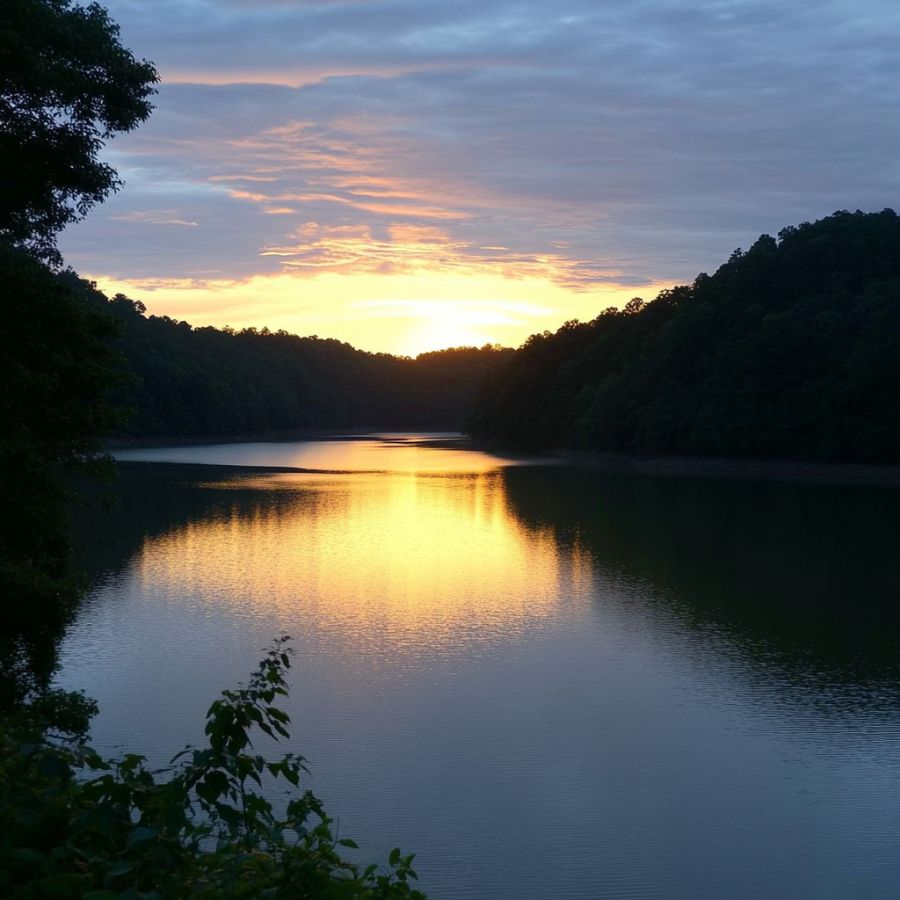
The Tennessee River flows through eastern Tennessee, starting at Knoxville where the French Broad and Holston rivers meet. It stretches about 652 miles before joining the Ohio River.
Rockhounds searching for Labradorite should explore the river’s gravel beds. Many successful hunters check areas where the current slows down, as heavier minerals often settle there.
Geological forces shaped this region over millions of years, leaving behind sedimentary and crystalline rock formations that sometimes contain interesting minerals. The river constantly reworks these deposits, bringing new specimens to the surface.
Several public access points provide entry to promising gravel bars, particularly near Chattanooga and the areas where tributary streams join the main river.
Copperhill
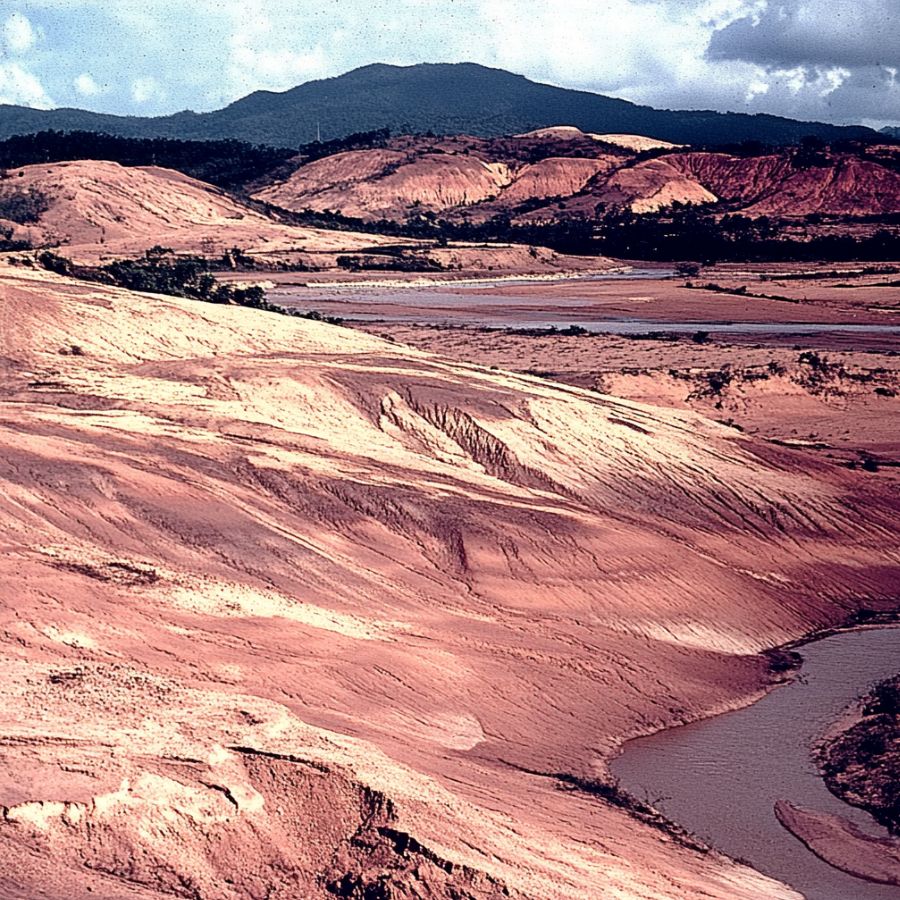
Copperhill is located in southeastern Tennessee, right on the Georgia border, surrounded by mountains like Big Frog and Little Frog. This small city forms part of the famous Copper Basin, with the Ocoee River flowing nearby. Labradorite has been discovered in this area, along with copper, iron, zinc, and quartz.
The Copper Basin stands out for its mining history dating back to the 1800s. Mining operations dramatically changed the landscape, creating a unique environment for rock collectors. Metamorphic rocks dominate the region, making it ideal for finding labradorite.
Look for labradorite in areas with schist formations, which are common throughout the hills surrounding Copperhill. These rocks formed during the Neoproterozoic era contain feldspar minerals. Old mining sites often expose fresh rock faces where gemstones hide.
Many rockhounds visit after exploring nearby Ducktown Basin Museum to learn about the area’s mineral wealth. The former mining roads provide good access points for collectors searching for labradorite.
Places Labradorite has been found by County
After discussing our top picks, we wanted to discuss the other places on our list. Below is a list of the additional locations along with a breakdown of each place by county.
| County | Location |
| Sevier | Clingmans Dome Sill |
| Coffee | Horse Mountain |
| Jefferson | Douglas Lake |
| Coffee | Ben Lomond Mountain |
| Unicoi | Unaka Mountains |
| Blount | Cooper’s Gem Mine |
| Monroe | Little Tennessee River |
| Fentress | Boatland |
| Unicoi | Rocky Fork Creek |
| Polk | Ocoee Gorge |
| Monroe | Sweetwater |
| Smith | Elmwood Mine |
| Stewart | Wells Creek Basin |
| Cheatham | Harpeth River |
| Monroe | Tellico Plains |
| Sevier | Clingmans Dome |
| Cocke | Cosby |


